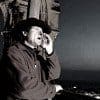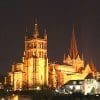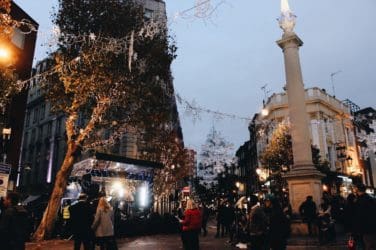words Julie Clerget
Lausanne is one of seven European cities in which the mission of the night watch has been maintained without interruption since the Middle Ages.
Initially in charge of keeping watch over the town and alerting citizens in case of fires by sounding the tocsin (from old French, an alarm bell), the occupation was slowly made obsolete by the automation of bells as well as by a shift in house building techniques, and the establishment of mobile fire brigades.
In the heights of the old city where the cathedral stands tall in the skyline, the night watch of Lausanne progressively entered the mores and the neighboring residents somewhat possessively appropriated the position.
While it has been threatened at least on two occasions, the mobilization of those enthusiasts kept it alive and it is now an integral feature of the city’s charm, which has a seemingly unwavering future.
Renato Häusler is the man who currently holds the position; I met him at 9.30pm in front of the Cathedral on a cold night of January to discover what this 600 year-old job is like in 2016.
“It’s the night watch, it’s ten o’clock, it’s ten o’clock”
Five nights a week, Mr Renato Häusler, 57, the night watch of the Lausanne Cathedral (Switzerland), calls out the hours from ten to two.
Adorned with a floppy black hat and a lantern, he does his round, stopping at the four sides of the belfry to announce the time to the city’s night owls.
Keeping a six hundred years-old tradition alive, Renato has endorsed the mysterious and emblematic role in 1987, when a friend tipped him off that a temporary spot was available.
Ever since, he has juggled his successive day jobs as a teacher and then as an educator with this peculiar occupation until a year ago, when he decided to commit himself to candle making. Fulfilling his passion for light shows, his art project, Kalalumen is now taking him around Europe where he designs and coordinates candle lit shows to accompany concerts in churches and cathedrals.
“The watch is what gave me the idea. The contrasts of lights and shadows on the stone columns when I walk with the lantern planted the seed in my mind.
It’s all because of this job, it has shaped me and in many ways, it has fulfilled me.”
Back in the cozy little wooden lodge enclosed between Clémence and Marie-Madeleine, the main bells of the tower, Renato shares the drive that keeps him coming up here night after night.
“It’s a like a bubble, there’s no running water, no bathroom or TV, none of that comfort. For the few hours I am here I feel centered. In this day and age society is obsessed with material success and status, it all goes too fast and traditions are dwindling. But the atmosphere up here; it’s different.”
Indeed, the walls and beams of the gothic building erected here in 1160 do not fail to evoke a rich past. Here, Renato retreats within history. Suspended in time, he walks the same path and repeats the same words that have been relentlessly pronounced by hundreds of men before him, resurrecting a figure that has watched, hour after hour, the city morph through the centuries.
One hundred and fifty three worn steps below, passers-by occasionally cock up their heads to catch a glimpse of the dark form. Some locals laugh and wave –the tourists seem puzzled as the night watch’s silhouette appears under the arch of the bell tower to announce yet an other hour.
words Julie Clerget





















